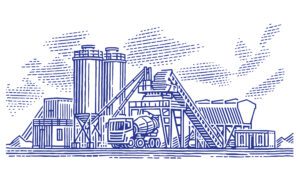Connect & Learn Webinar Series: Safety Walks
Safety is a habit. Habits are built through consistency, fueled by discipline and dedication day in and day out, and are supported by a routine. One of the simplest and most effective ways to drive safety as a habit, from leadership to the frontline, is to conduct safety walks.
This is the first post for our Connect & Learn webinar series, where we provide in-depth tutorials on how to best use Connected Worker® by Parsable for specific industrial standard operating processes and procedures, with real-world examples from our customers. This time, we look at how to drive operational excellence by improving safety walks.
Watch the recorded webinar above where we work with one of our field experts to understand how Parsable is used by our customers to effectively promote, sustain and improve safe working conditions. Or, read the summary below.
What Are Safety Walks?
A safety walk is the inspection of a working environment, focused on identifying and correcting unsafe or potentially unsafe conditions. It’s a common practice and likely not a new idea to anyone reading this post. There’s a ton of great content out there that focuses on what makes a great safety walk, who should do it, and how (check out OSHA’s take on it). Rather than discussing the benefits and life-saving impacts of safety walks, this post will challenge the tools widely adopted by many manufacturing companies to conduct and record safety walks.
Safety walks must be conducted and recorded through the use of modern digital technology, connected tools that enable organizations to effectively promote and sustain safe working conditions.
Why Use Digital Technology for Safety Walks?
Paper-based safety walks are widely implemented in industrial environments, on the shop floor and out in the field. However, using paper to facilitate any work activity, let alone safety-related tasks, introduces waste that ultimately inhibits your organization’s ability to achieve operational excellence. Waste can manifest as motion – in which the results from a safety walk are transcribed into a system of record – or waiting – in which responses to trending failures are delayed due to the time required for key stakeholders to aggregate and interpret the data.
With the widespread availability of digital tools today, it’s unacceptable to ignore digital solutions. Not only do digital tools provide convenience to frontline workers, it also brings visibility to your company.
Go In-Depth: How Parsable Improves Safety Walks
Convenience is a critical precursor to adoption. Tools that are clunky, difficult to use or unintuitive are inconvenient, which people generally resist using. That resistance reduces the potential impact of the tool, as workers find reasons not to use it. After all, it’s not the tool itself that makes an impact, but a person’s use of that tool to accomplish a task.
From Isolated to Connected
While adopting a digital transformation initiative has a number of benefits, it’s not enough to overcome the inherent digital isolation of frontline workers which is caused by disconnected tools and solutions. One critical component of safety walks is the response to the findings of the safety walk. There are two types of necessary responses: trending and immediate.
Trending – A trending response is an action or initiative that is executed in reaction to a frequent or consistent result. This response benefits greatly from a digital tool, and can be enhanced by providing a connected experience in which individuals are connected to the trending results, which can help to identify root causes, making the response much more impactful.
Immediate – An immediate response is an action that is executed immediately, as a reaction to a triggering event. This type of response can manifest in several ways including, but not limited to:
- Providing on-the-job feedback or coaching
- Raising a tag
- Stopping work as a part of stop work authority
- Reporting a near miss
- Completing a safety-based observation
In many cases, a flagged failure requires collaboration between one or more people, on one or more teams to work together toward a resolution. Understanding what actions need to be taken and clear communication are essential in these situations. The actions taken must be seamless and supported by modern-digital tools like embedded workflows.
Connecting teammates and allowing them to communicate directly with one another can be facilitated through common communication mechanisms, like mobile chat and messaging.
In short, responses — both trending and immediate — require the right people to be engaged at the right time, and be equipped with the information necessary to take the correct actions. A simple digital tool is not enough, the critical component of connection is only achievable through Connected Worker.
From Blindspots to Insights
By using a digital tool to streamline the collection of data, you can “see” who did what, when and what the impact was.
This visibility enables new ways to drive compliance and identify new, impactful continuous improvement opportunities. When applied specifically to safety walks, visibility can help your organization ensure the walks are being conducted and can surface trending issues more quickly, empowering your company to shorten the lead time, from issue to response.
Through convenience and visibility, digital tools can help promote and sustain safe working conditions. But, simply making the move to digital isn’t enough. Tools must connect people with the information, systems and machines they need to work with in order to effectively promote, sustain and improve working conditions.
Safety walks are a simple, yet powerful way for any industrial organization to consistently maintain a safe working environment. Just as important as the safety walk itself, is the tool used to complete the safety walks. Start with safety walks to establish the digital foundation needed to increase compliance and visibility, then take it to the next level with the power of Connected Worker.






